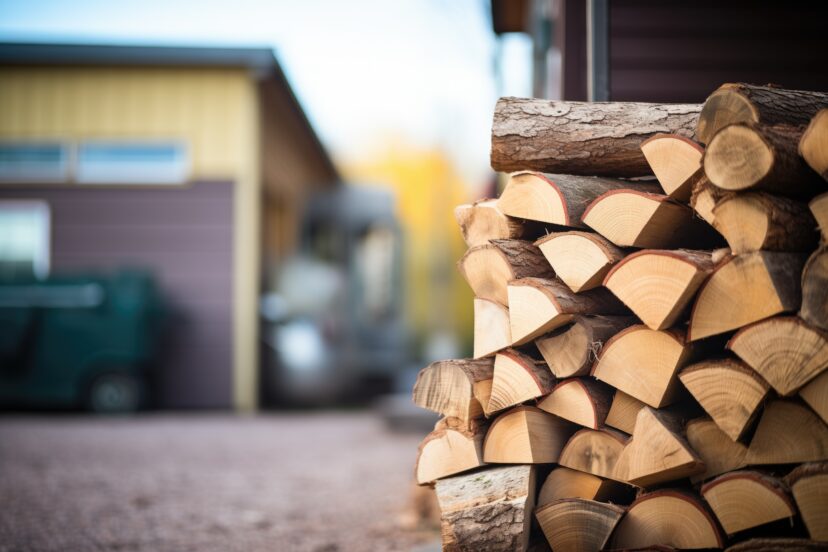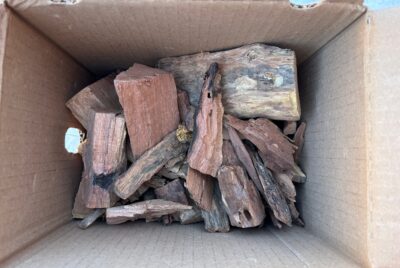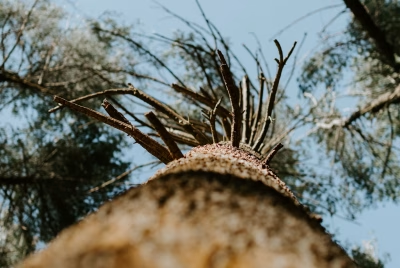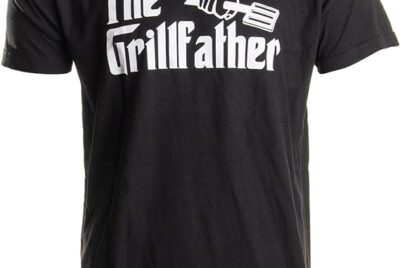The Best Wood For Smoking Meat
As an avid bbq guy, I’ve spent countless hours perfecting the art of smoking meat. One of the most crucial aspects of this culinary craft is choosing the right wood. The type of wood you use can make or break your barbecue, infusing your meat with distinct flavors that can elevate your dish from good to unforgettable. In this article, I’ll share my insights on the best woods for smoking meat, helping you navigate the world of wood smoking like a pro.
Understanding Wood Smoking Basics
Before we dive into specific wood types, let’s talk about why wood choice matters so much in the smoking process. When you smoke meat, you’re not just cooking it; you’re infusing it with complex flavors that develop over hours of slow cooking. The smoke from the wood interacts with the meat, creating that characteristic smoky taste we all love.
But not all woods are created equal. Each type of wood imparts its own unique flavor profile, ranging from mild and sweet to strong and bold. The key is to choose a wood that complements your meat without overpowering it.
When selecting smoking wood, consider factors like:
- The type of meat you’re smoking
- The intensity of flavor you desire
- The smoking time
- Your personal taste preferences
Now, let’s explore some of the top wood choices for smoking meat.
Top Wood Types for Smoking Meat
Hickory: The Classic Choice
Hickory is often considered the king of smoking woods, and for good reason. It’s the wood I reach for when I want a rich, bacon-like flavor that pairs beautifully with most meats. Hickory produces a strong, hearty smoke that’s perfect for beef, pork, and poultry.
When I use hickory, I get a robust, savory flavor that’s unmistakably “barbecue.” It’s especially great for longer smoking sessions, as the flavor deepens over time without becoming bitter. Just be careful not to overdo it – hickory can be overpowering if used excessively.
Pecan: Southern Charm in Every Bite
Pecan is like hickory’s milder, sweeter cousin. It’s a favorite in Southern barbecue, and I love using it for a more subtle smoke flavor. Pecan imparts a delicate, nutty taste that’s fantastic with pork and poultry.
I find that pecan smoke adds a lovely richness to meat without being too assertive. It’s also great for mixing with stronger woods like hickory or oak to create a more complex flavor profile.
Oak: Versatile and Reliable
Oak is my go-to wood when I want a medium-strength smoke flavor that works well with just about any meat. It burns hot and slow, making it ideal for longer smoking sessions.
The flavor oak imparts is clean and straightforward – not too strong, not too mild. I often use oak as a base wood and then add other woods for more specific flavors. It’s particularly excellent with beef, as it enhances the meat’s natural flavors without overshadowing them.
Mesquite: Bold and Distinctive
Mesquite is the wild card of smoking woods. It produces an intense, earthy flavor that’s instantly recognizable. I use mesquite when I want to make a bold statement with my barbecue.
This wood burns hot and fast, so it’s best for shorter smoking sessions or for use in small quantities. I love mesquite with beef, particularly for dishes like brisket or beef ribs. However, be warned – a little goes a long way. Too much mesquite can make your food taste bitter.
Fruit Woods: Sweet and Mild
Fruit woods are my secret weapons for adding subtle, sweet flavors to smoked meats. They’re gentler than hardwoods, making them perfect for more delicate meats like poultry and fish.
- Apple Wood: Subtle Sweetness– Apple wood is one of my favorites for its mild, slightly sweet flavor. It burns slowly and produces a light smoke that’s perfect for chicken, turkey, and pork. I find that apple wood adds a lovely fruity undertone without overpowering the meat’s natural flavors.
- Cherry Wood: Rich and Fruity– Cherry wood offers a sweet and fruity flavor with a hint of tartness. I love using cherry wood for its beautiful color – it imparts a mahogany hue to the meat that looks as good as it tastes. It’s excellent for pork and poultry, and I often mix it with oak or hickory for a more complex flavor profile.
Wood Pellets: The Modern Smoking Solution
In recent years, wood pellets have gained popularity among smoking enthusiasts, myself included. These compressed sawdust pellets offer convenience and consistency that traditional wood chunks or chips can’t match.
- Benefits of Using Wood Pellets– Wood pellets burn cleanly and efficiently, producing a consistent smoke flavor throughout the cooking process. They’re easy to store, simple to use, and come in a wide variety of flavors. I find that pellets give me more control over the smoke intensity, allowing for more precise flavor management.
- Popular Wood Pellet Flavors– You can find pellets in all the classic smoking wood flavors – hickory, mesquite, apple, cherry, and more. There are even blended varieties that combine multiple wood types for unique flavor profiles. I love experimenting with different pellet blends to create my own signature smoke flavors.
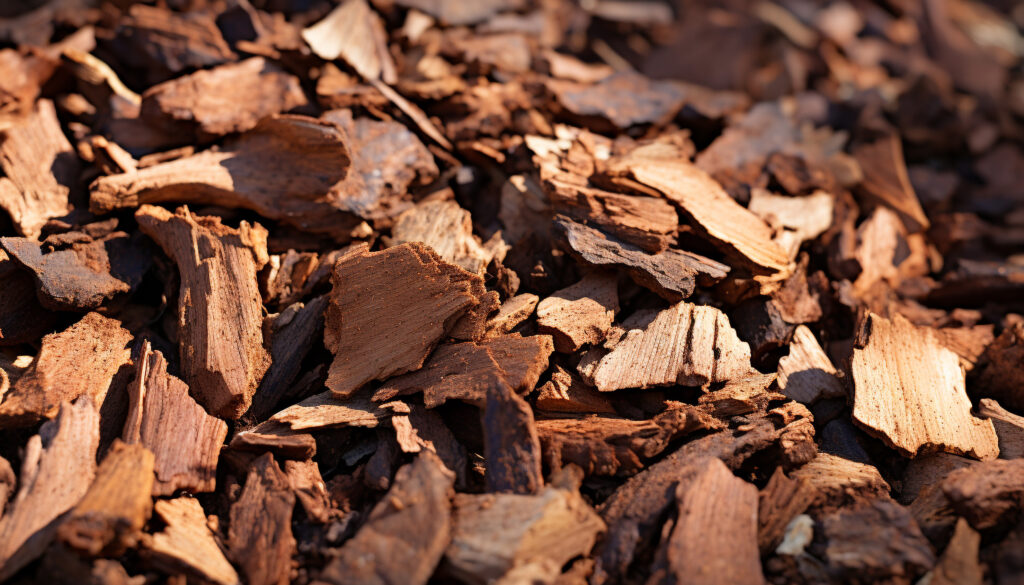
Pairing Woods with Different Meats
Choosing the right wood for your meat can elevate your barbecue from good to great. Here are some of my favorite pairings:
- Best Woods for Beef– For beef, I typically reach for stronger woods that can stand up to the meat’s robust flavor. Hickory, oak, and mesquite are all excellent choices. I particularly love using a mix of hickory and oak for beef brisket – it creates a complex, savory flavor that complements the meat perfectly.
- Ideal Woods for Pork– Pork pairs beautifully with a wide range of woods. For a classic flavor, I often use hickory or apple. For something a bit different, I’ll use cherry or pecan. These fruitier woods enhance pork’s natural sweetness without overpowering it.
- Top Choices for Poultry– For chicken and turkey, I prefer milder woods that won’t overwhelm the delicate meat. Apple, cherry, and pecan are my top choices. They add a subtle sweetness that complements poultry beautifully. For a slightly stronger flavor, I might mix in a bit of hickory or oak.
- Perfect Woods for Fish– When smoking fish, it’s crucial to use light, mild woods that won’t overpower the delicate flavors. I always reach for apple, or cherry when smoking fish. These woods impart a gentle smokiness that enhances the fish without masking its natural taste.
Tips for Successful Wood Smoking
Proper Wood Preparation
- To get the best results from your smoking wood, proper preparation is key. If you’re using wood chunks or logs, make sure they’re properly seasoned (dried). Green or unseasoned wood can produce bitter smoke and unpleasant flavors.
- For wood chips, I recommend soaking them in water for about 30 minutes before use. This helps them smolder rather than burn, producing more smoke and less ash.
Avoiding Common Mistakes
- One of the biggest mistakes I see beginners make is using too much wood. Remember, you’re aiming for a subtle smoky flavor, not an overwhelming one. Start with a small amount of wood and add more if needed.
- Another common error is not maintaining a consistent temperature. Fluctuating temperatures can lead to uneven cooking and smoke penetration. Invest in a good thermometer and learn to manage your fire effectively.
Choosing the right wood for smoking meat is an art form that can dramatically enhance your barbecue game. Whether you prefer the bold flavors of hickory and mesquite or the subtle sweetness of fruit woods, there’s a perfect wood out there for every meat and every palate.
Remember, the best way to find your favorite smoking woods is through experimentation. Don’t be afraid to try different woods and combinations – that’s half the fun of barbecue! With practice and patience, you’ll soon be creating mouthwatering, perfectly smoked meats that will have your friends and family begging for more.
So fire up that smoker, choose your wood, and get ready for a flavor adventure. Happy smoking!
FAQs
- Can I mix different types of wood when smoking meat? Absolutely! Mixing woods can create complex and interesting flavor profiles. Just be careful not to overpower milder woods with stronger ones.
- How long should I smoke meat for? Smoking times vary depending on the type and size of the meat. Generally, plan for 1-1.5 hours per pound at 225-250°F, but always use a meat thermometer to ensure proper doneness.
- Is it necessary to soak wood chips before smoking? While not strictly necessary, soaking wood chips can help them smolder and produce smoke for a longer period. However, for wood chunks or pellets, soaking is not recommended.
- Can I use any type of wood for smoking meat? No, stick to hardwoods specifically meant for smoking. Avoid softwoods like pine or cedar, which can impart unpleasant flavors and potentially harmful chemicals.
- How do I store my smoking wood? Keep your wood in a dry, well-ventilated area. Avoid storing it in plastic bags, which can trap moisture and lead to mold growth.


